Research and engineering converge at UM-Flint to help Parkinson's diagnoses
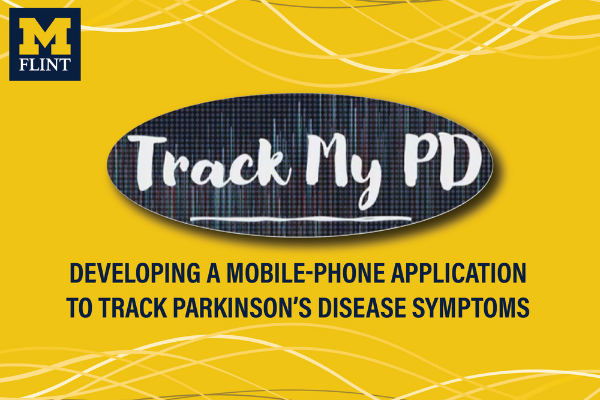
University of Michigan-Flint professors Nathan Miller, Linda Zhu, and Charlotte Tang utilized their research in cognitive neuroscience, bioengineering, and computer engineering to develop a mobile application that can help Parkinson's Disease (PD) patients and doctors measure the severity of tremors and other symptoms remotely. The app guides patients through measurements of tremors in a variety of scenarios, including resting and while in motion. The app also guides patients through other movement and balance tasks to measure Parkinson's disease symptoms.
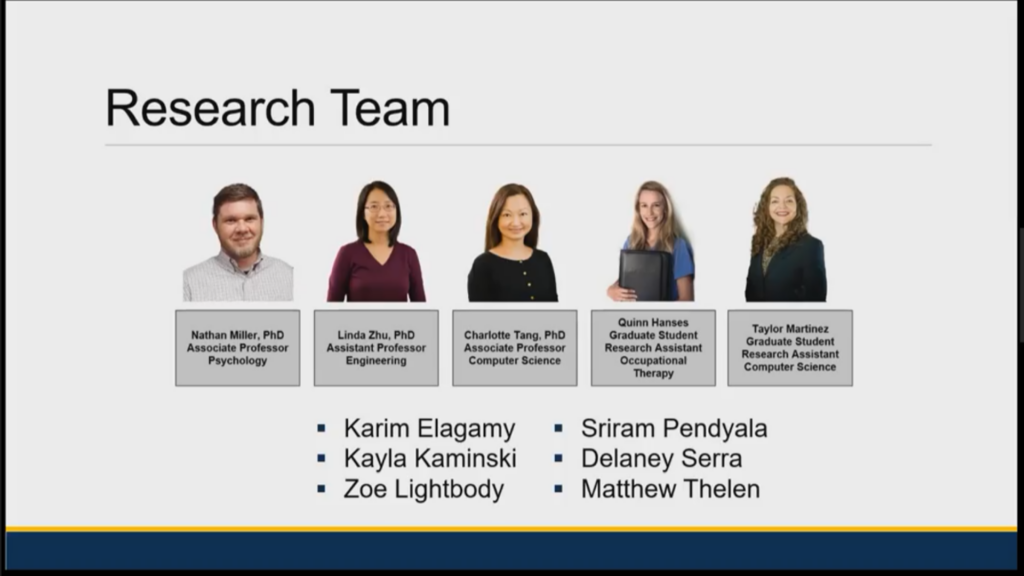
This development comes at a crucial time. According to "Ending Parkinson's Disease: A Prescription for Action," the number of people with Parkinson's has doubled in the past 25 years and is expected to double again by 2040. In addition, most Parkinson's patients are on Medicare and many are entering older adulthood. The physical distance between Parkinson's patients and specialists creates particular problems for this population. On average, traveling to an in-office visit to a Parkinson's specialist represents around 100 miles of travel and three hours of drive time for patients.
The travel burdens examined in "Ending Parkinson's Disease" were in Kansas. But Miller says the situation is similar in Michigan, with only four specialist centers supporting the whole state. Through Undergraduate Research Opportunity Program (UROP) and Economic Development Administration (EDA) funding, Miller and undergrad students Abdul Almounajed and Mohammad Tuleimat have set up a Michigan Parkinson's Disease Resource Map to help PD patients and their families locate resources. The map, which was current as of March 2020, will be updated in the near future to reflect changes that have occurred during the COVID-related pause in the project.
The medical field started recognizing the need for video conferencing to solve this problem in the early 1990s, using early teleconferencing tools for specialists to meet visually with patients at their primary care physicians' offices. The increase in telehealth during COVID has further assisted this population (who may not be able to drive themselves) in avoiding the commute, the waiting room, and other obstacles to care. This app will allow physicians caring for Parkinson's patients to measure their tremors remotely, evaluate disease progression over time, and allow physicians and specialists to make the necessary adjustments to medication and treatment plans without having to do in-person assessments.
This research enables a shift to more effective preventative care. One of the key concerns for Parkinson's and its impact on our healthcare system is the structural disincentives Medicare has for preventative care. A typical 30-minute follow-up visit is about $100 if it happens in the home or community, while a hospital-based visit pays double that. Parkinson's patients need high-touch care to ensure treatment responsiveness and accurate medication. When those are lacking, a patient can be subjected to a highly increased risk of an injury-inducing accident. Medicare pays approximately $25K for surgery and institutional care in this case. Studies show that hospital care for individuals with Parkinson's is frequently unsafe. The $25K paid out for an injury is 100-200 times what Medicare pays to a neurologist to optimize balance and overall function, which is known to help prevent falls. This shift to telehealth visits for such preventative care helps to mitigate some of this disincentive.
The traditional metrics used to measure tremors in a physician's office have long been criticized for being insufficiently precise for measuring small changes. Each modality tested is rated on a 1-5 scale by the physician or specialist in whole numbers. In addition to tremors, the app includes finger-tapping tests that measure hand movement speed, another measure commonly indicated as impaired as Parkinson's progresses. The team performed multiple trials considering various mobile devices, sampling frequency, and accuracy to assess the app's system. Zhu is running an analysis comparing the sensitivity of the accelerometers and gyroscopes in the phones against more sensitive, but more expensive lab-grade equipment.
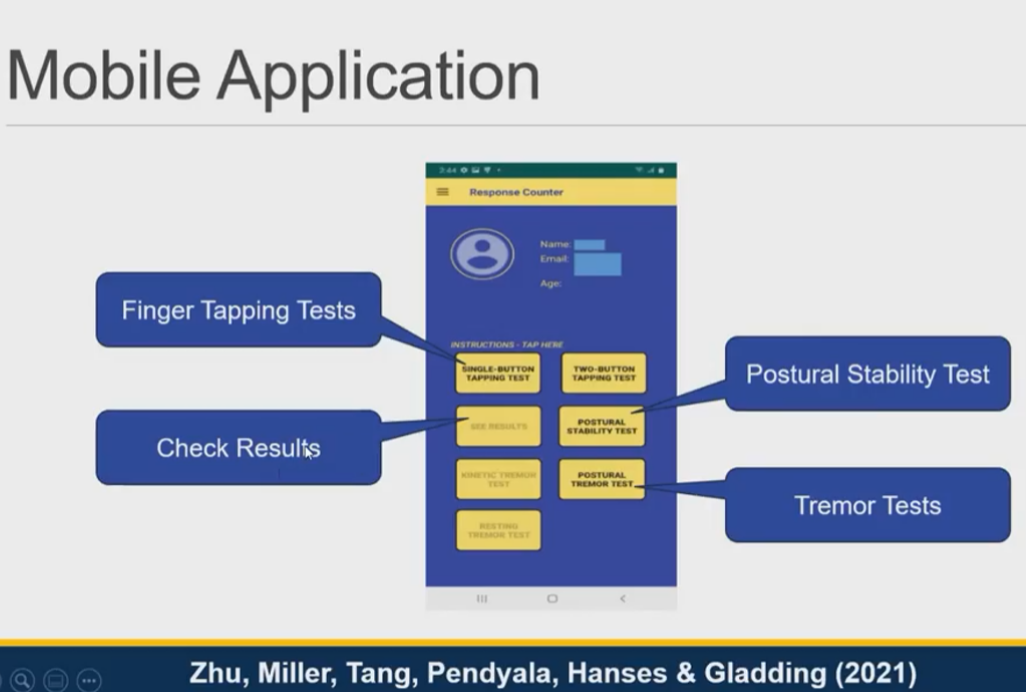
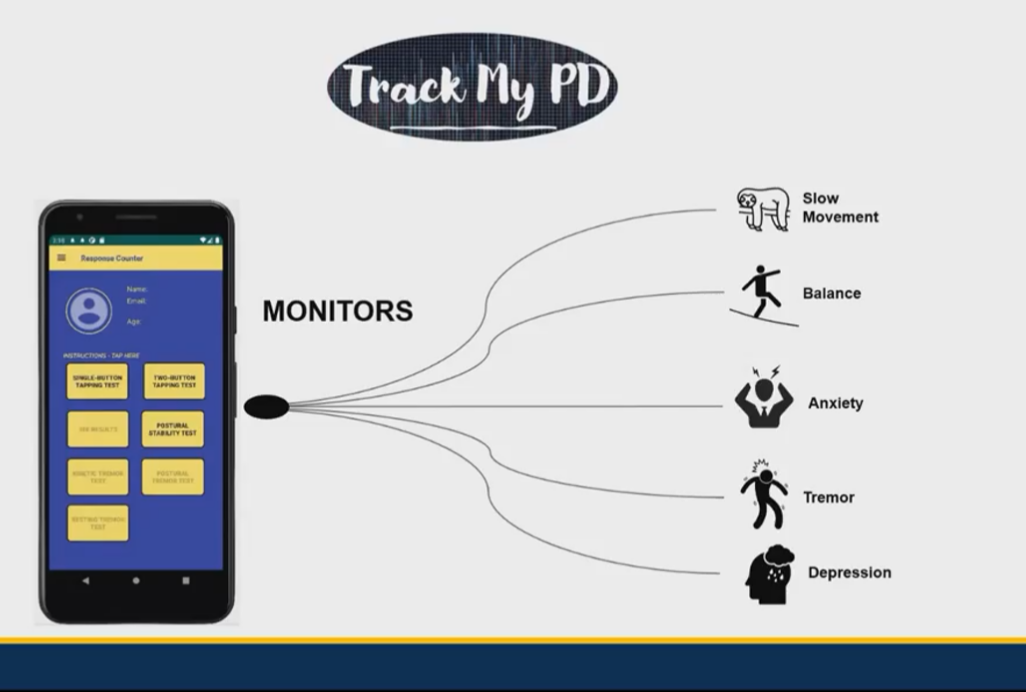
Assistant Professor of Engineering Linda Zhu has a background in sensor technology, bioengineering, and neuroscience. She specializes in noise vibration harshness (NVH) in the automotive field and teaches "Noise and Vibration" in the UM-Flint Engineering program. This background in vibration and signal processing helped guide this work in identifying tremor strength by measuring 3D motions.
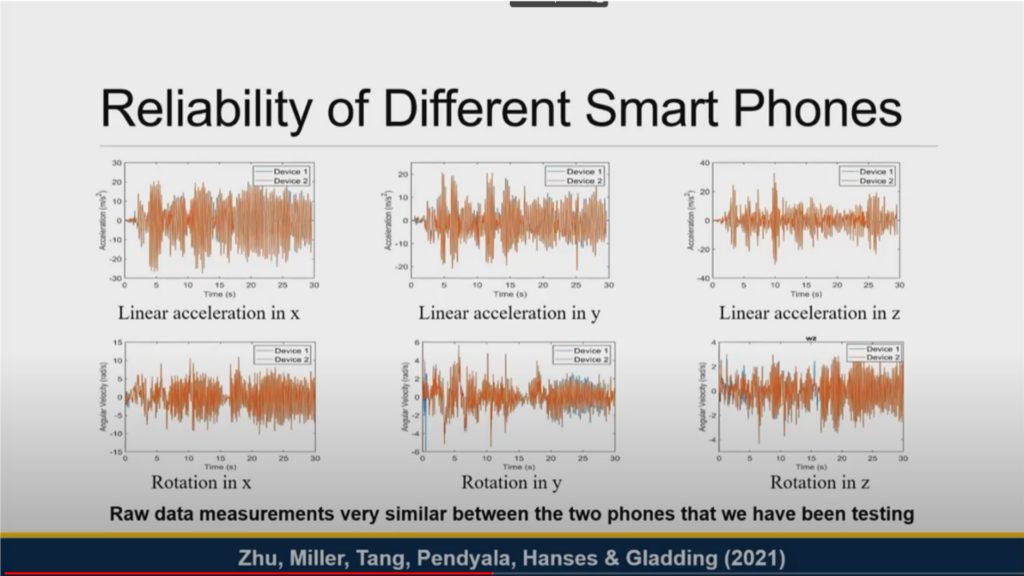
Miller, an associate professor of psychology at UM-Flint, did his undergraduate work in music psychology and studies the psychology of rhythm perception. His interest in Parkinson's research is due to a family connection. He had looked into the efficacy of treatments of Parkinson's symptoms through research around the use of a metronome to help with rhythm perception and production while walking and helped to facilitate community-based exercises through stationary cycling and community interventions for people with Parkinson's disease.
In addition, Miller has conducted postdoctoral work to assess patients' varied responsiveness to treatments based on genetic markers in their DNA. This is crucial work to be done as we progress towards a cure for Parkinson's. The ability to use the data from this app in conjunction with genetic data could go a long way toward individualized, personalized care, which experts say is crucial to positive outcomes.
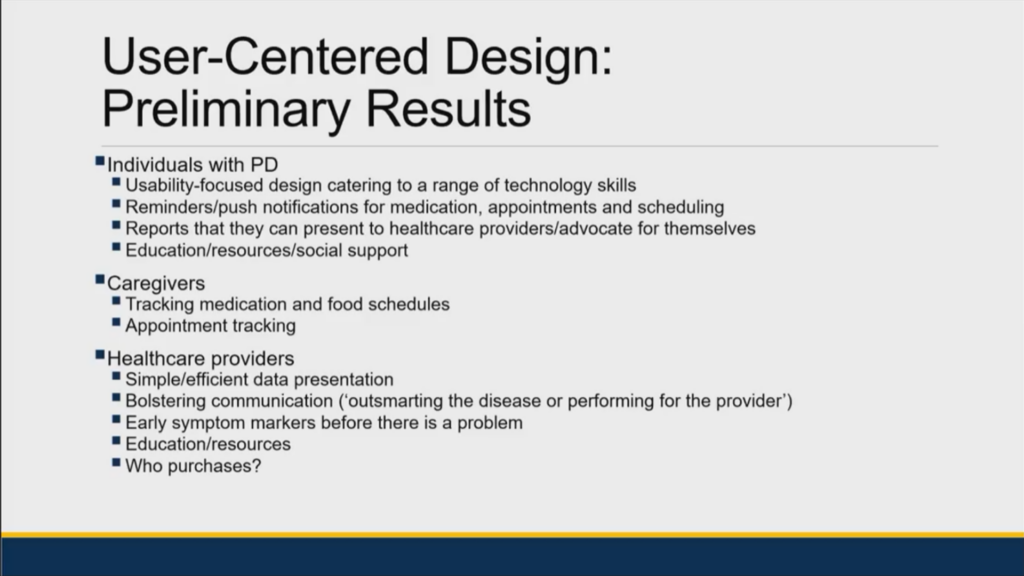
However, none of that would be possible without a user-centered design that enables easy use by Parkinson's patients and caregivers in the home. Charlotte Tang, associate professor of computer science, is using her extensive background and experience in Human-Computer Interaction (HCI) to ensure the application will be usable for individuals with tremors and reduced motor function.
All three professors integrate their research practices with their teaching. Zhu has co-published research with students, and Miller brings his research into the class to illustrate real-world applications for course topics. Tang also incorporates her HCI research into her teaching with classroom examples and projects that teach the students to design their own applications with end-users in mind.
The project is looking to conduct studies to assess the reliability and validity of the measures and improve development and is looking for research assistants for data collection, processing, analysis, and presentation. Interested undergraduate students can learn more here. This is a paid opportunity through UM-Flint's Undergraduate Research Opportunities Program (UROP). The deadline to apply is June 1. For those seeking more information about this project, Miller has given a very thorough talk with Allon Goldberg, Track My PD talk with Center on Aging Research Cluster (CoARC).
Related Posts
No related photos.
- College of Arts, Sciences & Education
- College of Health Sciences
- College of Innovation & Technology
- Engineering
- Health & Safety
- Medical Technology
- Occupational Therapy
- Psychology
- Research
- Technology
- University News
Rob McCullough
Rob McCullough is the communications specialist for the College of Innovation & Technology. He can be reached at romccull@umich.edu.